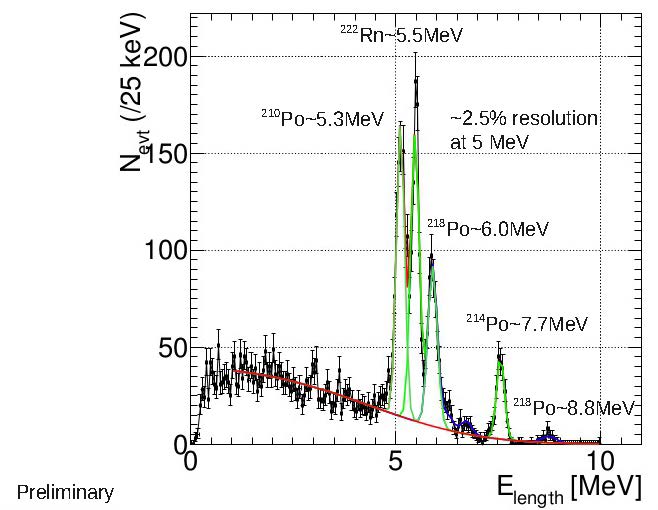This experiment is led by Josh Spitz, shown above, who has recently moved from our group to a faculty position at University of Michigan. The Double Chooz Time Projection Chamber (DCTPC) detector was developed as a novel neutron monitoring system for Double Chooz . Adapted from the Dark Matter Time Projection Chamber (DMTPC) detection concept, DCTPC allows measurement of the direction and energy of fast neutrons, providing valuable input to Monte Carlo simulations of the production and interaction of such background events. The low pressure He- and CF4-filled detector, shown next to Josh Spitz, above, has both a charge-coupled device (CCD) and a wireplane readout. We are collaborating with Jaime Dawson and Adrien Hourlier from APC, University of Paris-7 on these projects.

|  |
Shown in the figure above is a CCD readout of an alpha event (right) taken with our prototype detector. The detector has remarkably good energy resolution. Above (left) you can see a preliminary plot demonstrating that DCTPC resolves the alpha peaks of the radon decay chain. The red curve indicates the neutron signal. The prototype and full size detector completed their runs in France in 2015.
In In summer 2015, the full-size detector moved to the Fermilab Booster Neutrino Line, and was renamed MITPC (The MIt/MIchigan Time Projection Chamber). It is being used to measure the in-beam fast neutron rate for MicroBooNE and SBND. In order to contain higher energy neutrons, the detector now runs neon. You can learn about our studies of drift in neon here.
